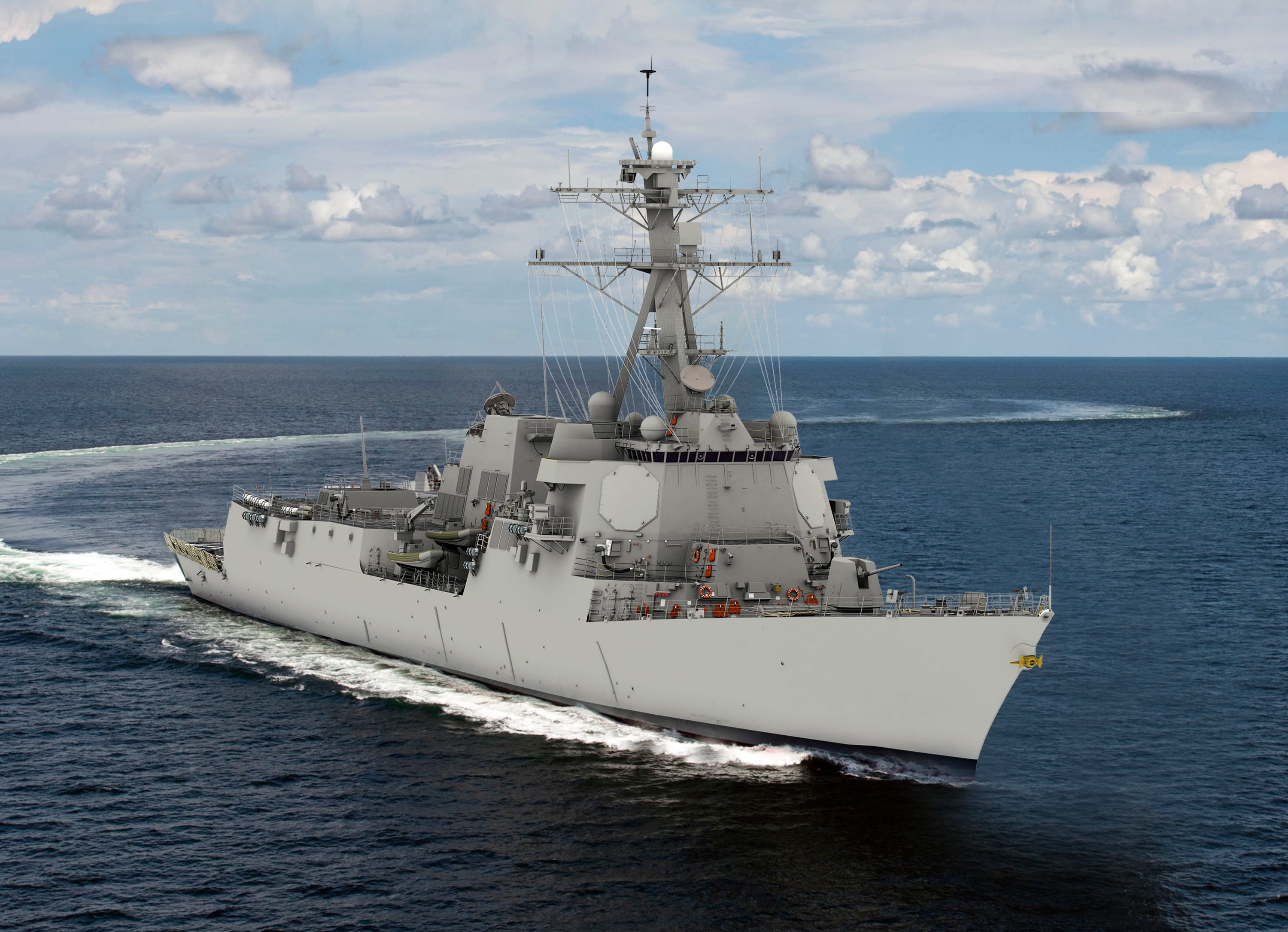WASHINGTON ― When the destroyer Jack Lucas joins the U.S. Navy’s fleet in 2024, it will look similar to the 73 Arleigh Burke-class destroyers that preceded it. But it’s going to be a very different, more capable killer than its predecessors.
Huntington Ingalls announced Tuesday that it had begun fabrication of the first Flight III Destroyer, a ship that crucially adds Raytheon’s AN/SPY-6 air and missile defense radar.
A ship is considered “in fabrication” after the first 100 tons of steel have been cut ― a milestone that Jack Lucas surpassed this week at Ingalls’ Pascagoula, Mississippi, shipyard.
The Flight III is a major overhaul of the guided-missile destroyer. It required a 45 percent redesign of the hull, most of which was done to accommodate the AN/SPY-6 and its formidable power needs.
The air and missile defense radar destined for Jack Lucas and its sister follow-on destroyers is 30 times more sensitive than the AN/ SPY-1D radars on the previous ships, additional sensitivity that will supercharge its capabilities in anti-air warfare and ballistic missile defense.
Coupled with ongoing Surface Electronic Warfare Improvement Program upgrades, the Jack Lucas will also have increased passive capabilities. When used in conjunction with other off-board passive sensors, such as with the F-35 fighter jet, it will be able to triangulate and locate a target without going active and giving away the ship’s position.
The radar is a needed upgrade as the Navy looks to keep ahead of China and Russia, according to Bryan McGrath, a retired destroyer skipper and consultant with The FerryBridge Group.
“Our venerable SPY-1 has served us well for a long time, but the threat has changed and we need a new radar,” McGrath said. “And SPY-6 is that radar. It is a considerable upgrade in all respects. It enables us to track more energetic and smaller objects at further ranges, and that buys you decision time.”
David B. Larter was the naval warfare reporter for Defense News.





